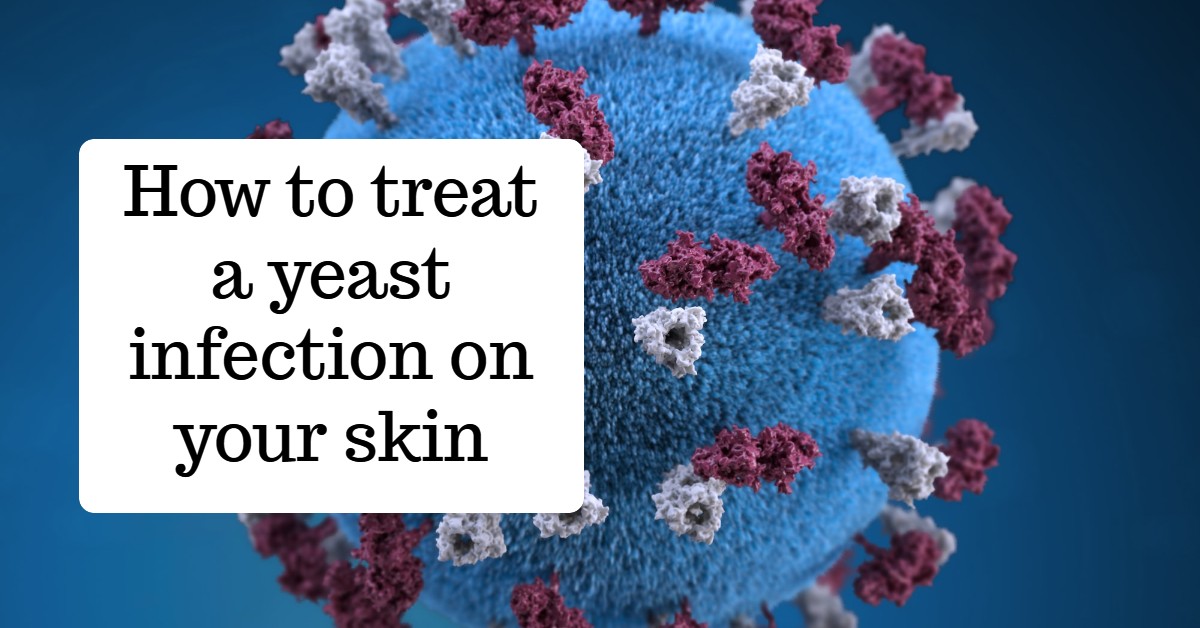How to Treat a Yeast Infection on Your Skin

How to Treat a Yeast Infection on Your Skin: Skin yeast infections may be easily treated, and most cases resolve within a few weeks. Yeast normally develops in and on your body, but occasionally an imbalance in your system might result in an infection with yeast. If you do, you’ll want relief right now. Even while the illness is annoying, it is also quite manageable if you recognise a yeast infection, deal with the underlying reasons, and utilise topical medications.

FAQs & Answers on How to Treat a Yeast Infection on Your Skin
Can I use home remedies to treat a yeast infection on my skin?
There are some home remedies that may help alleviate the symptoms of a yeast infection, such as tea tree oil or yogurt. However, it’s important to note that these remedies may not be as effective as over-the-counter or prescription medications. If you’re considering using a home remedy, talk to your healthcare provider first.
How long does it take for a yeast infection on the skin to go away?
The duration of a yeast infection on the skin can vary depending on the severity of the infection and the treatment used. Mild infections may clear up within a few days, while more severe infections may take a week or more to improve. It’s important to continue using the medication as directed even if the symptoms start to improve.
Can I prevent yeast infections on my skin?
There are some steps you can take to help prevent yeast infections on your skin, such as keeping the skin clean and dry, avoiding tight-fitting clothing, and using mild, fragrance-free products on the skin. However, some people may be more prone to yeast infections than others, and it’s not always possible to prevent them completely.
Can a yeast infection on the skin spread to other parts of the body?
It’s possible for a yeast infection on the skin to spread to other parts of the body if left untreated. For example, if a yeast infection develops in the groin area, it can spread to the thighs and buttocks. It’s important to treat the infection promptly to prevent it from spreading.
How to Treat a Yeast Infection on Your Skin
Treating a yeast infection involves:
- Identification processes
- Treatment procedures.
Let’s discuss them in detail.
Identifying a Yeast Infection
Look for scaly, red spots
A rash with a scaly surface is a common manifestation of a yeast infection. It will be dark red or pink in colour with many lumps that resemble pimples. Don’t disregard your redness because it’s tiny because your rash may be minor or extensive across a vast affected region.
- The patches might occasionally appear round or more formless.
- Check warm, humid areas of your body.
- Each patch may develop a centre that changes the hue or colour of the patch.
Examine your red spots to see whether you are scratching them
If you have a yeast infection on your skin, it can itch and sometimes burn; pay attention to how frequently you find yourself altering your clothing or catching yourself rubbing the region to get some comfort. It’s possible that you don’t have a yeast infection if your rash doesn’t itch.
- Even if your rash is itchy, a yeast infection is not always the cause of it.
- If you have an infection on your foot, you could find that the itching gets worse when you take your shoes or socks off.
Think about where the rash is located
The folds between your buttocks, under your breasts, on your feet, between your fingers and toes, and other warm, moist places of your body are where yeast infections are most prone to develop. Particularly around skin creases and beneath breasts, yeast grows in these areas.
- The likelihood of a yeast infection is higher in warm, humid environments.
- Analyse the redness that is close to the skin creases.
Try to find red pustules
The red pustules are most likely to appear at the edge of your red area and may seem like little pimples. The pustules itch more and leak more when they are scratched.
Look at your risk factors
A yeast infection is more likely to affect obese individuals, those with diabetes, those on antibiotics, and those with compromised immune systems. Additionally, poor hygiene or wearing tight clothing are risk factors for yeast infections.
- Think about the location and season since hot, humid temperatures can also increase your chances of getting a yeast infection.
Treating the yeast infection on your skin
Keep the affected area clean and dry
Moisture can worsen a yeast infection on the skin, so it’s important to keep the affected area as dry as possible. Use a gentle soap and water to wash the area, then pat it dry with a clean towel. Avoid rubbing or scratching the area, as this can irritate the skin and make the infection worse.
Apply an antifungal cream or ointment
Over-the-counter antifungal creams or ointments, such as clotrimazole, miconazole, or terbinafine, can be effective in treating a yeast infection on the skin. These products work by killing the yeast that causes the infection. Follow the instructions on the package carefully, and apply the cream or ointment to the affected area twice a day.
Use a medicated powder
If the affected area is prone to sweating or is in a location where skin rubs against skin, such as under the breasts or in the groin area, you may also want to use a medicated powder. These powders, such as miconazole or clotrimazole powder, can help to keep the area dry and prevent the yeast from growing.
Wear loose-fitting clothing
Tight-fitting clothing can trap moisture against the skin, which can worsen a yeast infection. To help the affected area stay dry, wear loose-fitting clothing made of breathable fabrics, such as cotton.
Maintain good hygiene
In order to treat and avoid yeast infections, good cleanliness is crucial; on the contrary, bad hygiene might actually make your yeast infection worse. You can use disposable cleaning cloths to refresh yourself once you get sweaty in addition to having frequent showers or baths.
If you have diabetes, control your blood sugar levels.
Infections caused by fungi, such as yeast infections of the skin, are frequent among diabetics. Keep your blood sugar under control if you have diabetes, and keep your skin dry and clean.
- For blood sugar management, abide by your doctor’s advice and take any prescription drugs as instructed.
Avoid irritants
Some soaps, lotions, and detergents can irritate the skin and make a yeast infection worse. Avoid using harsh or scented products in the affected area, and opt for mild, fragrance-free products instead.
See a healthcare provider
If the yeast infection on your skin is severe or doesn’t improve with over-the-counter treatments, you should see a healthcare provider. They may recommend stronger prescription medication or perform additional tests to rule out other conditions.
Conclusion
In conclusion, yeast infections on the skin can be uncomfortable and frustrating, but there are effective treatments available. By keeping the affected area clean and dry, using antifungal creams or ointments, and avoiding irritants, you can help to alleviate the symptoms of a yeast infection and promote healing. If you’re unsure about how to treat a yeast infection on your skin, or if your symptoms persist or worsen, be sure to talk to your healthcare provider. With proper care and attention, you can successfully treat a yeast infection on your skin and get back to feeling your best.




